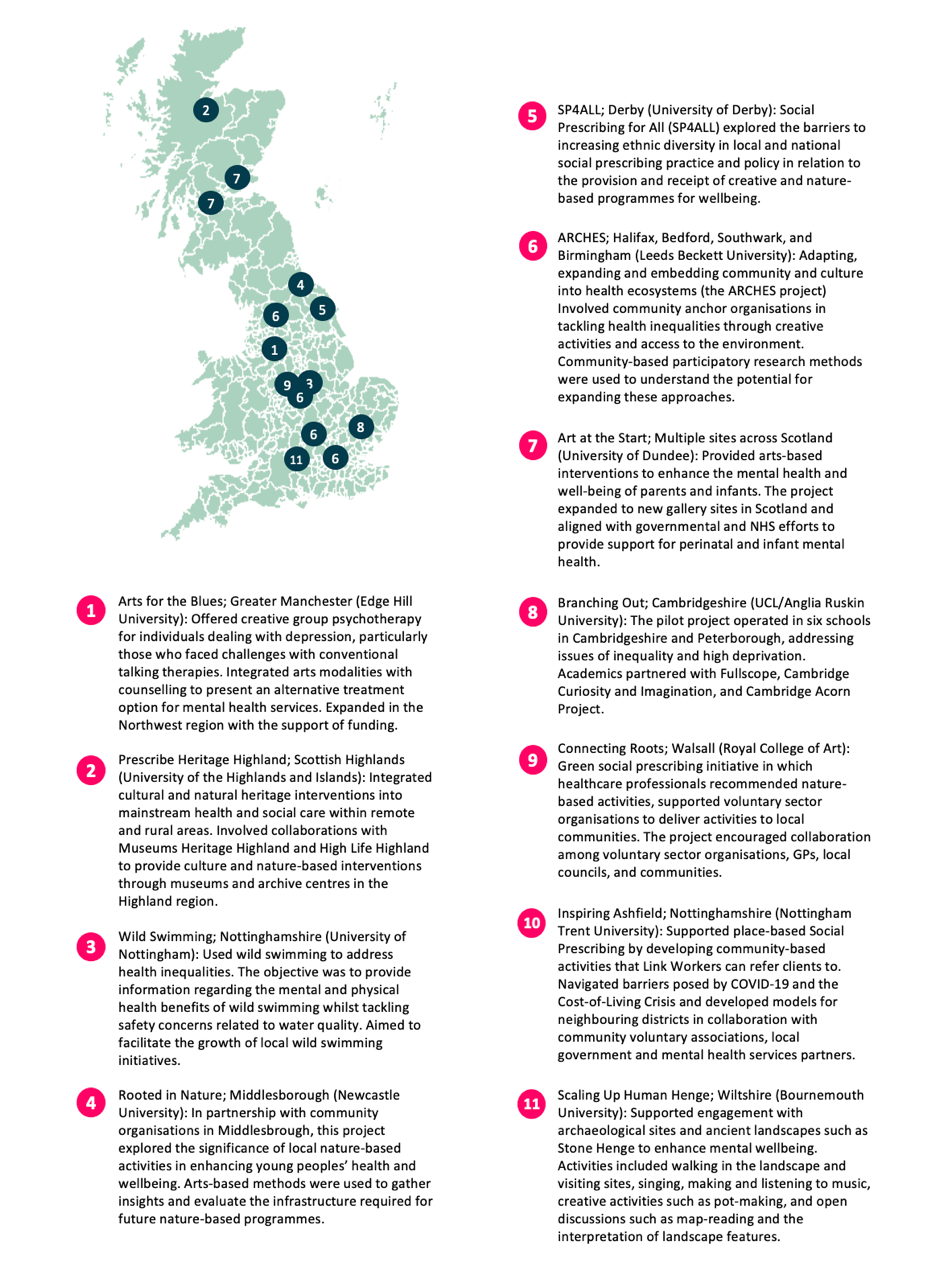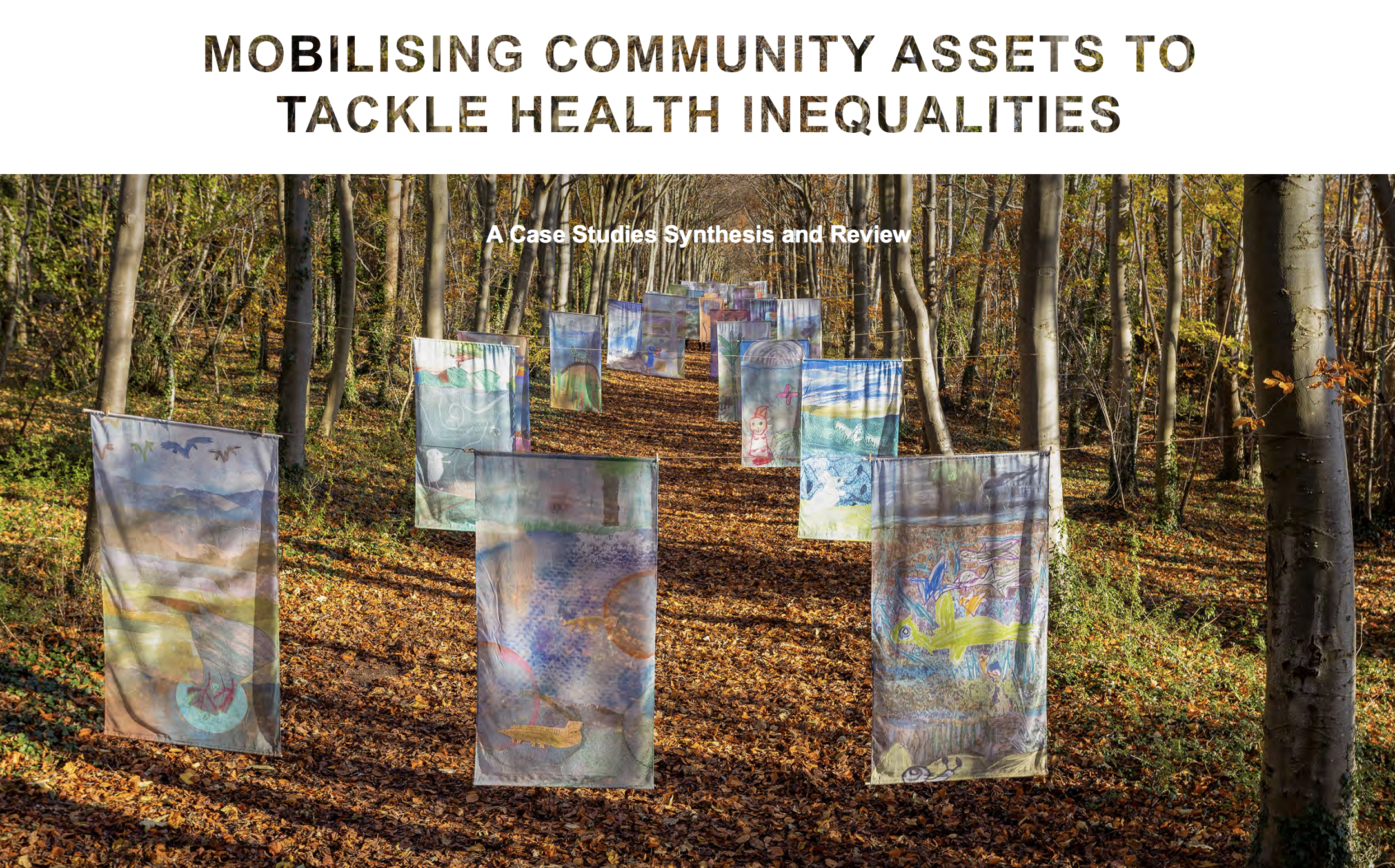Mobilising Community Assets – Phase 1 Case Study Synthesis: Insights & Learnings
Mobilising Community Assets – Phase 1 Case Study Synthesis
At the recent Mobilising Community Assets to Tackle Health Inequalities (MCA) Knowledge Exchange Event (see here for details), the MCA Team published two new reports. In this blog post, lead author Dr Rabya Mughal summarises the Case Study Synthesis, bringing together insights from Phase 1 of the research programme.
Introduction:
We compiled this synthesis using insights from eleven community-university partnerships funded under UKRI's Mobilising Community Assets to Tackle Health Inequalities program. Our research focused on empowering communities to address health disparities by highlighting lived experiences and examining the impact of collaborative community, cultural, and nature-based activities in the UK. It was conducted by a working group from UCL, the What Works Centre for Wellbeing and Leeds Beckett University.
Overview:
In Phase One of the Mobilising Community Assets to Tackle Health Inequalities program, pilot projects explored ways to scale up localised approaches to tackling health inequalities. These projects employed interdisciplinary methods involving academics, NHS partners, and community organisations, alongside the newly implemented Integrated Care Board (ICB) system within the NHS. Each project served as either a pilot or prototype, offering a small-scale model for potential implementation across an ICB's integrated care system. While project aims, reach, and participant groups varied, they generally sought to utilise community assets to: improve population health and healthcare outcomes, address disparities in access to services, enhance productivity and value for money, contribute to preventive care goals, and support broader NHS objectives related to social and economic development.
A practice-based case study template was completed by eleven (out of twelve) organisations, adapted from a tool by the What Works Centre for Wellbeing and Leeds Beckett University. Case studies offer practical findings derived from real-world experiences, providing narratives on intervention development and outcomes within specific contexts. They illuminate key implementation aspects and outcomes, serving practitioners, policymakers, and funders in understanding the application and adaptation of approaches across diverse settings. Incorporating community perspectives, case studies offer insights into the 'how' and 'why' of projects or programs. The methodology enables charities, small enterprises, and community groups to structure their project stories for evaluation, funding applications, and strategic planning, addressing the challenges associated with evaluative techniques particularly for creative and community organisations.

Themes:
1. Aims and purpose
We found that the projects prioritised understanding, planning, and implementing strategies to facilitate the widespread adoption of effective interventions across various regions and contexts. Scaling efforts took multiple forms: Arts for the Blues focused on scaling up interventions in healthcare and cultural sectors, while projects like Prescribe Heritage Highland aimed to create conditions for scalability in remote areas. Creating an evidence base was highlighted with initiatives such as Wild Swimming and SP4ALL, who focussed on generating evidence and developing guidelines. Program design elements were tailored to deliver non-pharmaceutical interventions within healthcare frameworks, addressing challenges such as rural service delivery and coordination among agencies. Additionally, programs aimed to address inequalities by reaching out to marginalised communities, with projects like SP4ALL targeting ethnic minorities and Branching Out working with children from low-income households to mitigate health disparities. These themes underscored the multifaceted approach to addressing health inequalities and scaling interventions effectively across diverse contexts.
2. Methods
We found that the projects emphasise evidence synthesis, stakeholder collaboration, mixed-method research, community engagement, adaptation based on experience, and the need to call for further research in these areas. A number of projects conducted feasibility studies based on collected reviews of literature and evidence, for example through NHS and World Health Organization data. There was an emphasis on collaboration, such as co-creating local networks and integrating arts methodology not previously used in the NHS. Mixed methodologies of evaluation were used, including conducting interviews, focus groups and using novel methods such as art therapy as evaluative techniques.
3. Impact/ Output
We found that projects highlighted the need for further research, particularly in understanding service gaps in addressing health inequalities. Arts for the Blues, Prescribe Heritage Highland, Wild Swimming, and SP4ALL all highlighted lack of research as an obstacle and the necessity for ongoing investigation in this area. Some projects achieved systemic impact, even altering NHS and local partnership dynamics. Arts for the Blues for example garnered national interest, while Prescribe Heritage Highland pioneered heritage-based social prescribing and Branching Out influenced public health funding allocation. Outputs included academic, media, and policy contributions, alongside local partnership development. Projects also demonstrated psychological improvements in wellbeing and confidence through quantitative measures.
4. Barriers/ enablers:
We found the NHS's bureaucratic structure has the ability to either facilitate or impede change. Projects like Arts for the Blues and Prescribe Heritage Highland demonstrate successful partnership within NHS frameworks, while others, like Art at the Start, navigate barriers by leveraging political support. Funding serves as both a catalyst and a hindrance; projects face delays without sufficient resources, leading to reliance on volunteers, which may not be sustainable. Collaboration can also pose challenges; building trust and relationships takes time, especially across different sectors with varying paces and styles of work.
Findings:
We think that because organisational culture varied between different sectors it affected the quality of collaborative work and service delivery – but flexibility was often necessary for effective partnership working. Improvement efforts focused on addressing gaps in services. Collaboration proved vital for successful project delivery but required time and effort to build trust and overcome sectoral differences. Positive NHS stories were noted, showcasing adaptable models using theory of change. However, low participation rates among vulnerable populations remained a challenge. Flexibility emerged as crucial for navigating the sector, enabling ad hoc projects to fill service gaps and allowing third-sector organisations to work at their own pace. These insights underline the importance of adaptability and collaborative approaches in delivering impactful projects within complex systems.

Find out more about the Mobilising Community Assets Research Programme here:
Subscribe to the Mobilising Community Assets newsletter to receive the latest updates – Sign up here.
